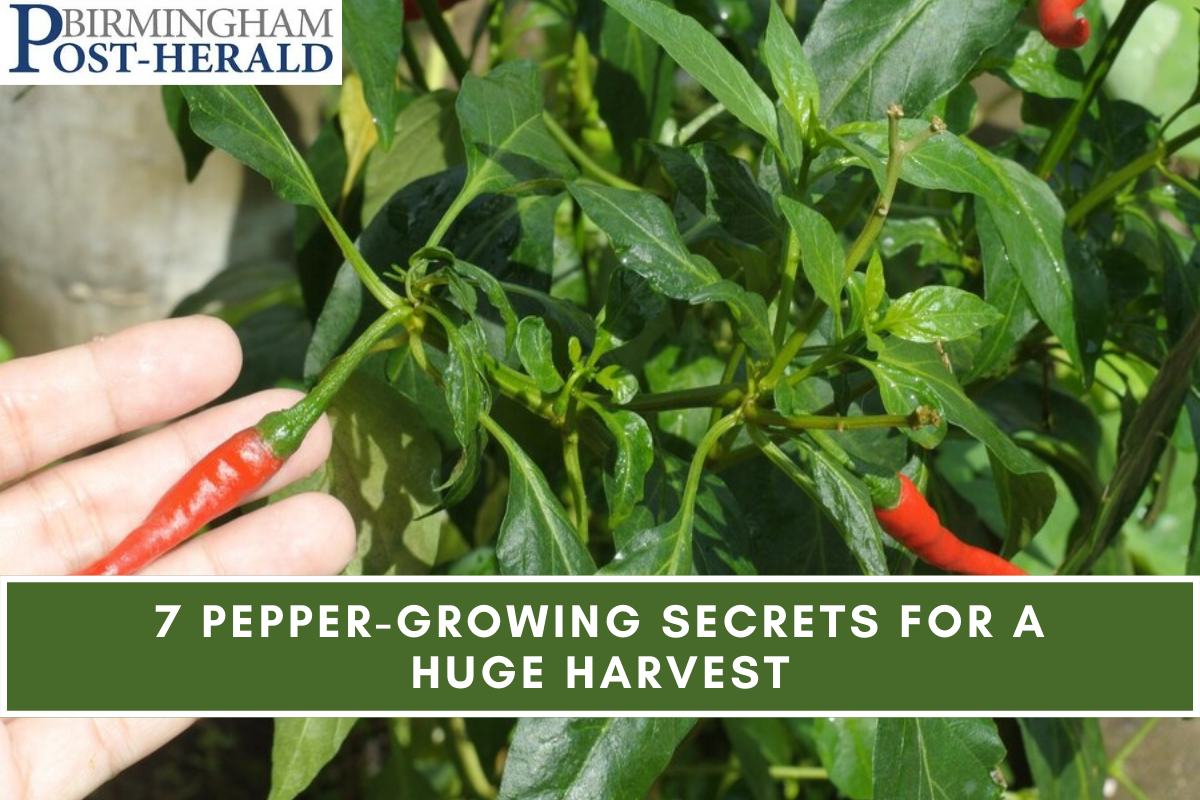7 Pepper-Growing Secrets For a Huge Harvest:- Pepper gardening is fun and a little addicting—once you grow one, you’ll want to grow all of them! There are some things you should know if you’re not getting the results you want. These tips will help you grow any kind of pepper, whether you like them hot or sweet.
People who garden can disagree about how to grow peppers. Some people swear by their ways, but others don’t. As long as your peppers get enough water, sunshine, and food, you’re doing the right thing, no matter what tips and tricks you use. But there are some things you can do to make sure you have a huge crop this year and in the years to come. How about we look at these useful tips?
7 Pepper-Growing Secrets For a Huge Harvest
Know If and When You Should Top
- Gardeners argue over pepper topping. Top the plant by cutting the top two to four inches to stimulate additional branches and bushier growth. Some pepper producers feel topping is necessary for success, while others say it harms. Under some conditions, it can help specific types, but your harvest will suffer.
- For large peppers like bell peppers, give your plant as much time as possible to develop fruit in a short growing season. Topping could hurt your harvest. The plant will preoccupy itself with branches and leaves rather than fruit.
- Long-season tiny peppers benefit from topping. Plants will have time to grow the extra foliage topping will yield and fruit. Due to their small size, peppers mature rapidly, so you won’t risk frost.
Don’t Worry About Cross-Pollination
- You simply need to consider cross-pollination to save seeds. If your primary issue is the taste of your peppers this year, don’t worry. Cross-pollination affects seeds but not this year’s fruit. Planting sweet and hot peppers together preserves their flavors, but the seeds you save will be a cross next year.
- You may maximize space and plant all varieties without worrying about flavor if you don’t save seeds. It’s great for tiny gardeners because you don’t have to separate pepper kinds.
Prevent Sunscald
- Peppers get burnt, a little-known pepper growing secret! Don’t let the sun ruin your peppers!
- They need lots of sunlight, but too much might burn them. Protect your fruit from the hottest sun by providing shade. This can be done various ways.
- Protect your peppers with shade cloth. Put it up in the afternoon and take it down when no longer needed. The Epic Cover Frame Kit simplifies this.
- Tall plants around peppers are another possibility. Plant sunflowers west to tower over them and create dappled sunshine. Planting peppers densely will shade them, yet allow adequate ventilation between them to minimize disease spread.

Also Read:- How to Plant, Grow, and Care for Celeriac
Water with Care
- When peppers wilt, gardeners often blame water. Too much water can also make peppers droop. Beginner gardeners may struggle with pepper care, but watering enough is essential for a good harvest.
- The best approach to water plants is drip irrigation. To avoid splashing on leaves, the system drips water slowly to plants near to the ground.
- Hand-watering isn’t ideal because wet leaves transmit infections and increase the risk of getting them wet. To avoid splashing, water plants by hand at the base.
- For both watering techniques, remove leaves that touch the ground to prevent disease. Morning watering allows water to enter into the soil before the sun evaporates it. Evening watering might spread illnesses since the soil stays wet longer.
Reduce Nitrogen on Flowering Plants
- Packages label fertilizer NPK as nitrogen, phosphorous, and potassium. Nitrogen grows foliage, so apply less when peppers flower. The pepper-growing secret helps plants focus on fruiting.
- A nitrogen boost will make your plants think (figuratively) they need to produce more leaves instead of blossoms, resulting in fewer flowers and maybe no peppers.
- Phosphorous promotes root growth and blooms. A 4-9-3 or similar fertilizer with low nitrogen and high phosphorus should be used when pepper plants blossom.
- Choose a high-phosphorous fertilizer because potassium improves the plant and doesn’t influence blossom development. One fertilization each month is plenty for flowering plants.
Harvesting and Overwintering
- Who knew that proper harvesting might lead to enormous pepper harvests? Like bell peppers, many pepper plants are consumed green, yellow, orange, or red. Peppers, like tomatoes, start green.
- Harvesting a few green peppers to continue flowering while the others develop will help your plants produce more peppers.
- Peppers are annuals but can be perennials in the correct conditions. Trim peppers and keep them warm indoors or in a cold frame to overwinter. If harsh winters make it hard to maintain temperatures, the plant may not survive.
If you like this article about 7 Pepper-Growing Secrets For a Huge Harvest Please share with your friends and family members.
